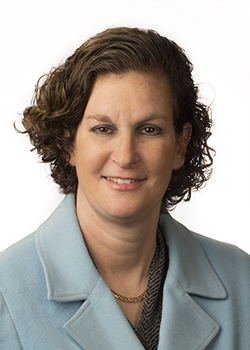Posted on July 25th, 2024. Posted by Kate Coyle

I recently attended the Jefferies Healthcare conference to support my healthcare PR clients and network with some of the most innovative healthcare leaders in the nation. While there, I had the opportunity to listen to numerous company presentations. Presenters always want to know what resonated in their message, what they could do better and what tips I can share to help them today. Here are some top recommendations to build awareness, connect with your audience and elevate your healthcare PR presence in 2024 and beyond.
Continue Reading
Posted on June 25th, 2024. Posted by ICR Westwicke

WHAT IS AN 8-K?
Form 8-K, also known as an 8K, is a form that is filed by public companies to notify their shareholders and the U.S. Securities and Exchange Commission (SEC) when an unscheduled material event takes place. In other words, it’s an announcement that a major event or corporate change that may be of interest to investors has occurred. Form 8K is known as a “current report” and is filed in addition to an annual report on Form 10-K and a quarterly report on Form 10-Q.
Continue Reading
Posted on May 8th, 2024. Posted by ICR Westwicke

In the U.S., healthcare is a $4.3 trillion industry. But beyond its sheer size, there are a range of convincing reasons why the space is worthy of consideration by investors.
During the 2024 Benzinga Virtual Healthcare Summit, ICR Westwicke’s Mark Klausner, Co-Founder and Managing Partner, and Sameer Khambadkone, Partner and Head of Healthcare Capital Markets, discussed emerging trends in the healthcare sector and why investors should consider financing the exciting innovations in the industry.
Continue Reading
Posted on February 27th, 2024. Posted by Paul Hatton

Since November 2023, the IPO market for companies has shown some signs of life – dare we say, “green shoots.” Over the most recent 15-week period, 10 firms transition to their new chapters as publicly listed companies. In 8 of the 10 cases, the stock price has risen above the new issue price, with notable increases from Cargo Therapeutics (“CRGX”) +55.0%; Arrivent Biopharma (“AVBP”) + 28.9%; and CG Oncology (“CGON”) + 129.5% (as of EOD, February 23). Continue Reading
Posted on January 22nd, 2024. Posted by Jack Powell

With the J.P. Morgan Healthcare Conference behind us, now is the ideal time to opine on what the future holds for the MedTech sub-sector in 2024.
See below for several thoughts and key takeaways on the general sentiment and outlook for MedTech this year. This is my personal view, which has been informed in part by a review of outlook-focused, long-form research from nearly two dozen MedTech sell-side analysts, discussions with many of the top institutional investors in healthcare, and (seemingly countless) meetings with investors, analysts, bankers and clients during the week of the J.P. Morgan Conference. Continue Reading
Posted on January 15th, 2024. Posted by Mark Corbae

Artificial Intelligence (AI), instrumental in many healthcare trends of 2023, promises to dramatically gain momentum in 2024, with increased use of transformative technologies that have applications across the healthcare industry, from the way pharmaceuticals are developed and patients are treated to the commercial side of the business.
AI is already used in healthcare for end-to-end drug development, helping to diagnose patients, improving physician-to-patient communication, transcribing and organizing medical files and images, and treating patients remotely. Continue Reading
Posted on December 7th, 2023. Posted by Sean Leous

When entering the public markets, successfully announcing your milestone hinges on preparation and telling the right story at the right time. Learn how.
Continue Reading
Posted on November 16th, 2023. Posted by ICR Westwicke

Each year, the J.P. Morgan Healthcare Conference provides a critical opportunity to meet with analysts, investors, and other leaders in the healthcare industry. However, making the most of the conference takes preparation.
Continue Reading
Posted on November 14th, 2023. Posted by Kate Coyle

In less than two months, seasoned investors, influential media, game changing startups and established industry giants will convene at the 42nd Annual JP Morgan Healthcare Conference. Continue Reading
Posted on September 29th, 2023. Posted by Bob East

Properly positioning your story within the investment community can help you build a quality, long-term shareholder base and enhance equity market value. To develop an effective investor relations strategy, you must understand how to best interact with investors, stay visible, and adapt to deliver both good news and bad.
Continue Reading






































